Over the last few years, we have heard a lot about the ‘Digital Railway’, but what has been delivered to create the digital signalling railway? We look at the delivery of schemes featuring state-of-the-art digital systems in the North West.
It may seem that not much has happened to create the Digital Railway European Rail Traffic Management System (ERTMS) in Great Britain but in the background a lot has been going on, such as the creation of Rail Operating Centres (ROCs), like the one in Manchester.
ERTMS is the European signalling and speed control system that ensures interoperability of the national railway systems, reduces the purchasing and maintenance costs of signalling, increases the speed of trains, signals more trains, and provides better safety. It comprises the European Train Control System (ETCS) – a cab-signalling system that incorporates automatic train protection – and Global System for Mobile communications for Railways (GSM-R). GSM-R has been delivered, along with a national fixed digital telecoms network to provide digital connectivity.
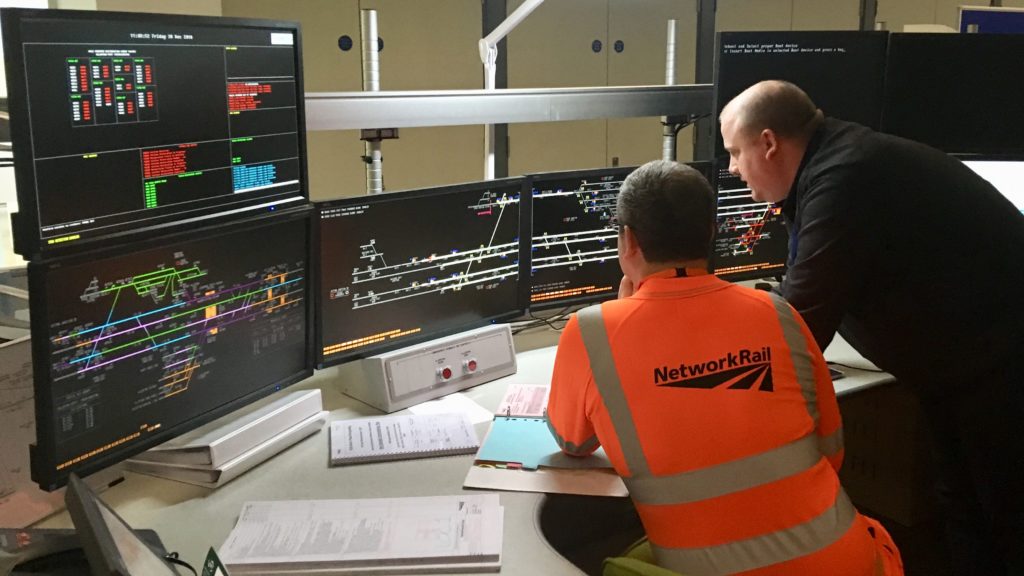
Interoperability
Work is underway to deliver ETCS on the East Coast Main Line and Network Rail has just published the industry’s first Digital Railway signalling specification suite. This is a set of standards and documentation to drive interoperability in the deployment of ETCS technologies for the whole GB main line network. The specification suite will support the Network Rail regions and train operators in unlocking improvements on reliability, efficiency, safety, and capacity for both passenger and freight.
The scope of the Digital Railway, as mandated by the Department for Transport (DfT), comprises Traffic Management Systems (TMS), ETCS Level 2, Connected Driver Advisory System (C-DAS), and associated enabling systems, all controlled from the ROCs.
In January, Siemens’ test and commissioning manager, Gordon McGadie, and principal test engineer, Kevin Heath gave a presentation to the IRSE on the Manchester ROC (MROC). Gordon and Kevin explained that control of the railways in the North West has gone through a huge transformation in the last eight years, with major areas such as Blackpool, Bolton, and Liverpool all coming under central control of MROC. Siemens and its engineering teams have been at the heart of this transformation and have successfully delivered a number of high-profile signalling schemes.
Rail Operating Centres
From the early 1990s through to 2015, ROCs were introduced onto Network Rail’s infrastructure to take over from the existing signal boxes. Network Rail’s aspiration in 2011 was to close around 40% of the 845 signal boxes on the network by 2020. While this has not been achieved, within the North West there has been considerable resignalling and recontrol work.
As of today, there are 14 ROCs on the GB network, which opened as follows: Ashford 1993, Gillingham 1994, Saltley 2003, Edinburgh 2006, Cowlairs 2008, Derby 2008, Cardiff 2010, Didcot 2010, Manchester 2014, Three Bridges 2014, York 2014, Basingstoke 2016, Romford 2016, and Rugby 2016.
A central signalling control was originally proposed for Manchester in British Rail days and was going to be built near to where MROC is now. Railtrack did not progress the construction of a large central control centre and instead built smaller control centres, such as Manchester North and Ditton.
Eventually, Network Rail built MROC in 2014. MROC’s opening coincided with the award of signalling renewals within the North West to Siemens, with an ambitious plan of re-signalling schemes and the re-control of signal boxes and interlockings into MROC. Siemens undertook a significant recruitment campaign and opened a new office, Manchester One, in the heart of the city. Network Rail aspired to introduce new technologies to all the new schemes to provide a future-proof, reliable railway, and the foundation for future ETCS role out.
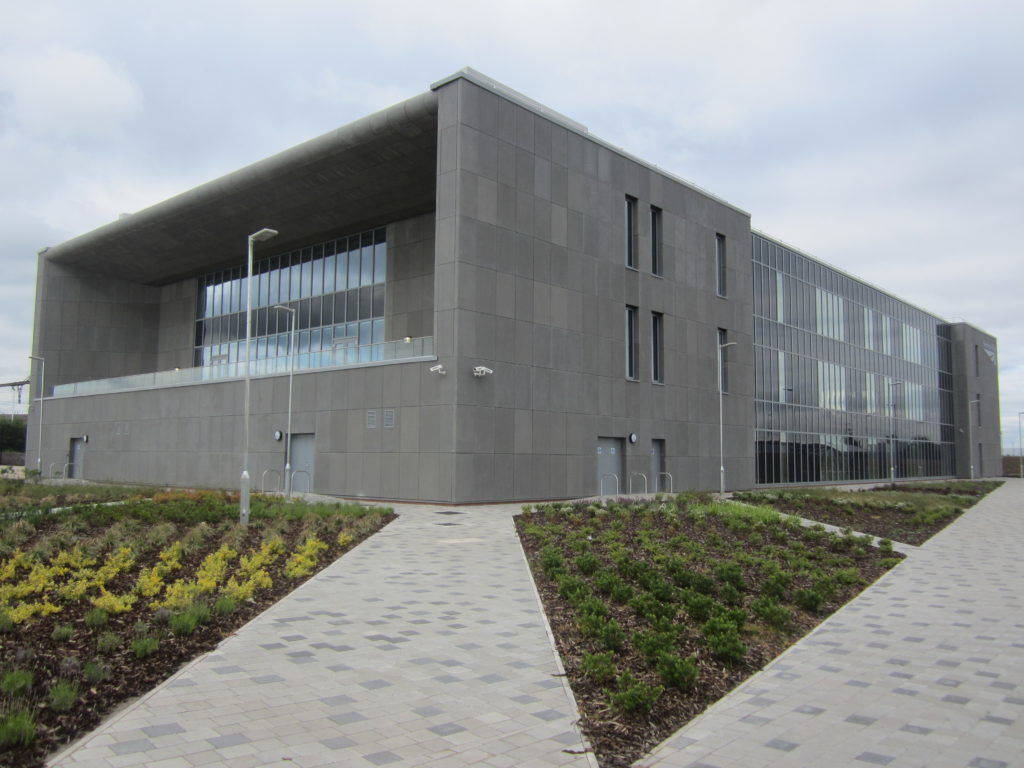
Control of the railways
The opening of MROC coincided with Huyton to Roby re-signalling works in the Liverpool area, with the closure of Huyton Signal Box, and the Liverpool Workstation being the first to be introduced into MROC, along with a Westcad Controlguide. This was a VDU based system with a Trackguard Westlock Computer-Based Interlocking (CBI) and Trackside Function Modules (TFMs) connected via Network Rail’s Fixed Telecoms Network (FTN) to Frauscher axle counters.
Siemens Mobility Limited is based in Chippenham with its R&D and manufacturing facilities, and its signalling equipment for the UK is made in this country. Chippenham has continuously been a centre of railway signalling manufacture since 1894, most famously as the home of Westinghouse Brake & Signal Company Ltd throughout most of the 20th Century. The signalling part of the business is now Siemens Mobility but many of its signalling product names still start with ‘West’.
FTN is a nationwide, resilient, digital multi-channel transmission on fibre and some copper cables and was originally provided to support the GSM-R radio network and operational telecoms.
Subsequently, an additional optical network (FTNx) has been constructed with routers to support the increasing usage of IP enabled devices. Both FTN and FTNx are now used for all railway telecom and data requirements, including links for signalling and electrification power control.
In February 2015, while not initially effecting MROC, an additional cross-over and platform was installed at Manchester Airport controlled from Manchester Piccadilly Power Signal Box (PSB). This affected the existing SSI for Heald Green, along with Heald Green Panel at Manchester Piccadilly PSB, and with new locations and TFMs for new signalling assets.

Signalling intervention
April 2015 saw the first major signalling intervention of the programme with the re-control of four SSIs from the existing Entrance/Exit (NX) panel at Manchester North Signalling Centre to MROC. All four SSIs remained at Manchester North equipment room controlled via a Westcad Remote Interface cubicle (RIF) which communicates via FTN between the SSIs and two new Westcad VDUs (Manchester Central and Manchester North Workstations) at MROC. The RIF cubicle was a new technology at the time and only a minor amendment to the SSI Panel Processor Modules (PPMs) was required to enable all four SSIs to be re-controlled to MROC.
In November 2015, Crewe Gresty Lane Panel and a CBI Westlock was delivered at Crewe. This was a new entry / exit (NX) panel replacing the existing life-expired relay interlocking and signal box, as well as a new Westlock CBI interfacing to the new panel via a panel multiplexer. These works were supported by the Crewe PSB panel renewal scheme which moved the life expired NX panel into another room at Crewe PSB, making room for the new Gresty Panel. All signalling assets were controlled via TFMs which communicated via a copper telecoms cable to the CBI via FTN. Because of the technologies used, the Gresty Lane signalling can be easily re-controlled into the MROC when required as part of the signalling strategy for the North West.
April and December 2016 saw Salford and Victoria SSIs replaced; both Windsor Bridge and Manchester Piccadilly PSB interlockings reduced to facilitate a new signalling system from Deansgate through to Salford Crescent via Ordsall; new signalling from Victoria station (west side) up to Salford Crescent; and re-controlling of the east side of Victoria (Victoria SSI) onto a Trackside Interface (TIF).
Major alterations
Three new Trackguard Westlocks were introduced at Salford, Ordsall, and Castlefield, along with one new Westcad VDU workstation at Oxford Road. Major alterations to the existing Manchester Central Workstation took place, along with the re-control of two Route Relay Interlockings (RRI) (Oxford Road and Trafford Park), including Relay Interface Time division multiplex Application (RITA) data and a new Automatic Route Setting (ARS) system was interfaced to both workstations (Oxford Road and Manchester Central).
All trackside signalling equipment was still interfacing to SSI TFM via copper cables and FTN to the CBI, although Frauscher axle counters were introduced, interfacing via relays to TFMs to the CBI. During the commissioning blockade, Manchester Piccadilly RRI was substantially altered across the fringe to Oxford Road. This was believed to be one of the largest alterations to an RRI undertaken in the past 20 years.
This was also the first time a managed network was brought into use in the MROC, which saw all signalling cubicles in the equipment room communicating to each other, as well as the two remote RRIs sitting on the network. This was the first positive step in providing a more robust and secure network with appropriate cyber security measures.
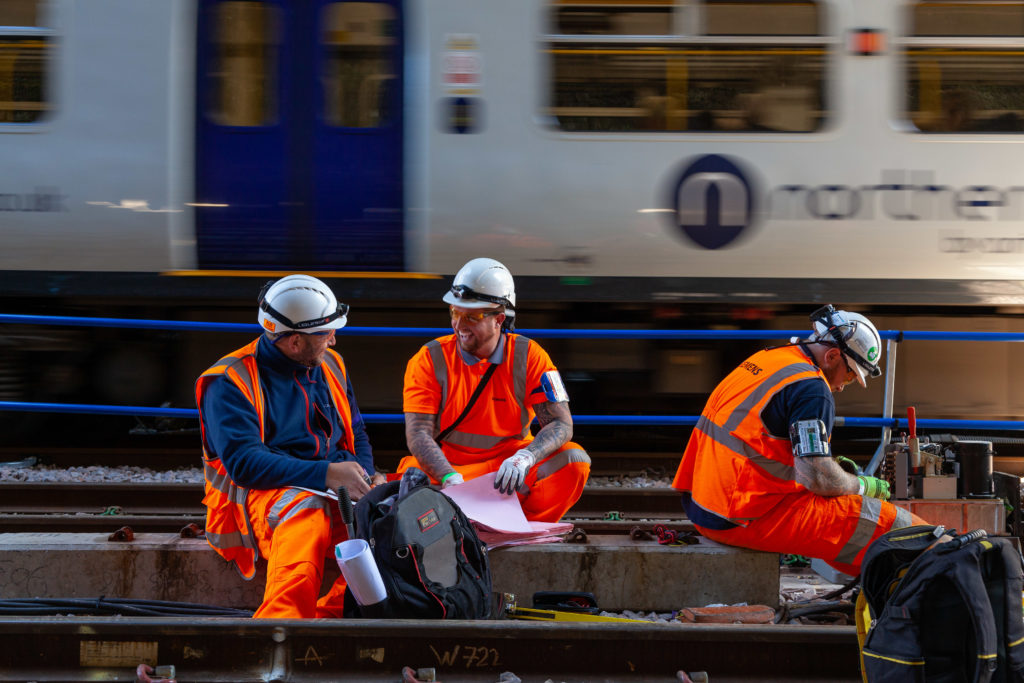
Immunisation works
Easter and August 2017 saw immunisation works to support electrification. Euxton SSI, located at Preston PSB, was extended all the way to Blackrod RRI with alterations to the panel. These works were required to allow overhead line equipment to be installed and commissioned within the area, and therefore an AC immune system was required.
The August phase of this scheme saw the re-modelling, re-development, and re-signalling of Bolton station, with Bolton RRI replaced with a new Westlock based at MROC. This meant no additional training was required as the CBI would be maintained and monitored by the technicians already based at MROC.
A new panel was required at Manchester Piccadilly to support the re-signalling which interfaced to MROC via a RIF cubicle. This was similar to how the Manchester North SSIs were interfaced to MROC. All new signalling was provided from Bolton station to Windsor Bridge, and significant change to Windsor Bridge RRI was also undertaken. To support both the re-signalling and immunisation aspects of the scheme, all the existing assets from Bolton station to Blackrod were re-controlled onto the Westlock. All signalling assets were controlled via TFMs by a copper telecoms network via FTN to MROC. Bolton was also on a managed network, so was part of the maintenance network backbone within MROC.
Ordsall Chord
September 2017 saw the completion and the commissioning of the Ordsall Chord, the new line to connect the railway to the south of the city to Manchester Victoria. While only a minor signalling stage, compared to other bridge and track works that had to be undertaken as part of this scheme, this was as major milestone due to the enormity of the civils work and the high-profile commissioning of the Chord to allow traffic from Manchester Piccadilly via the Castlefield Corridor to Manchester Victoria.
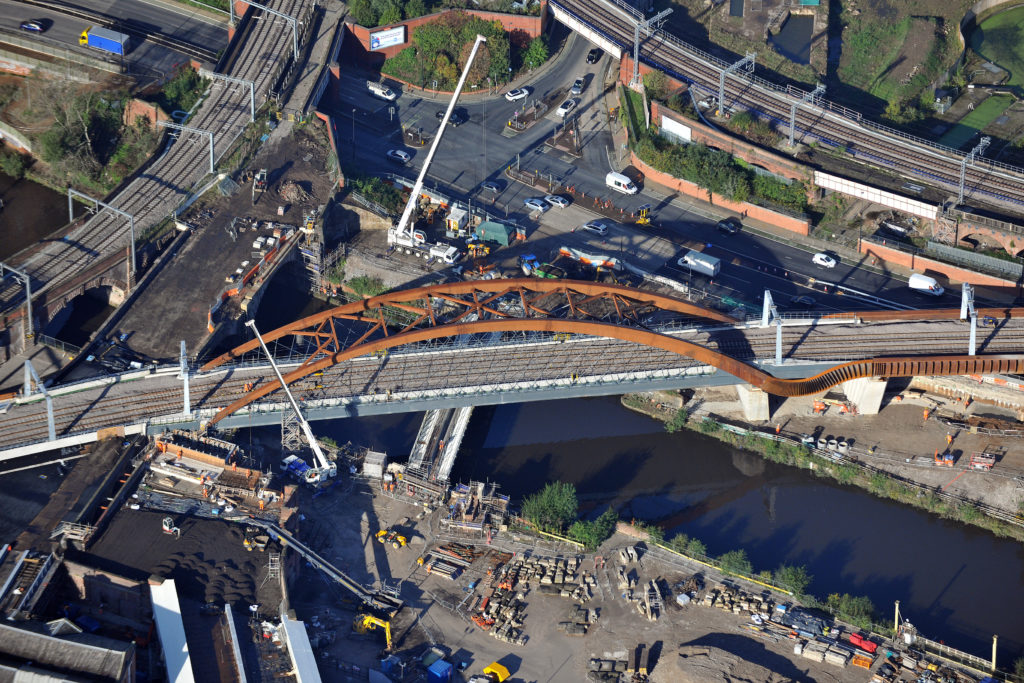
These works were added onto the existing Salford and Ordsall Westlocks, so that all the ‘principal testing’ data had to be tested offsite before the commissioning and the scheme delivered in a short 54-hour period. This also affected both Manchester Central and Oxford Road workstations which were updated to include the new signalling.
All signalling assets were controlled by existing REBs and location cases brought into use during the Christmas 2016 works. All works associated with the Ordsall chord were designed as final and back-engineered to deliver each stage. This meant minimal impact and changeover was required, as all line side equipment had been pre-wired and was ready for the lineside cabling to be connected.
Blackpool
March 2018 saw the commissioning of Blackpool re-signalling and immunisation works. This was a significant piece of work in the North West, which saw the railway closed for 20 weeks during the winter months to provide a brand-new signalling system and fully electrified line from the main at Preston to Blackpool North.
The scheme closed five mechanical signal boxes, Blackpool North, Poulton, Carleton Level Crossing, Kirkham, and Salwick, replacing them with one new Westcad workstation at MROC controlled via two new Westlock interlockings. All signalling was controlled via TFMs on a copper telecoms backbone and fibre via FTN, with the axle counters interfacing to the CBI via relays and TFMs. Blackpool workstation also saw Carleton LX re-controlled into MROC with a brand-new touch screen level crossing unit. Again, Blackpool Westlock sat on a managed network interface to the secure MROC maintenance network.
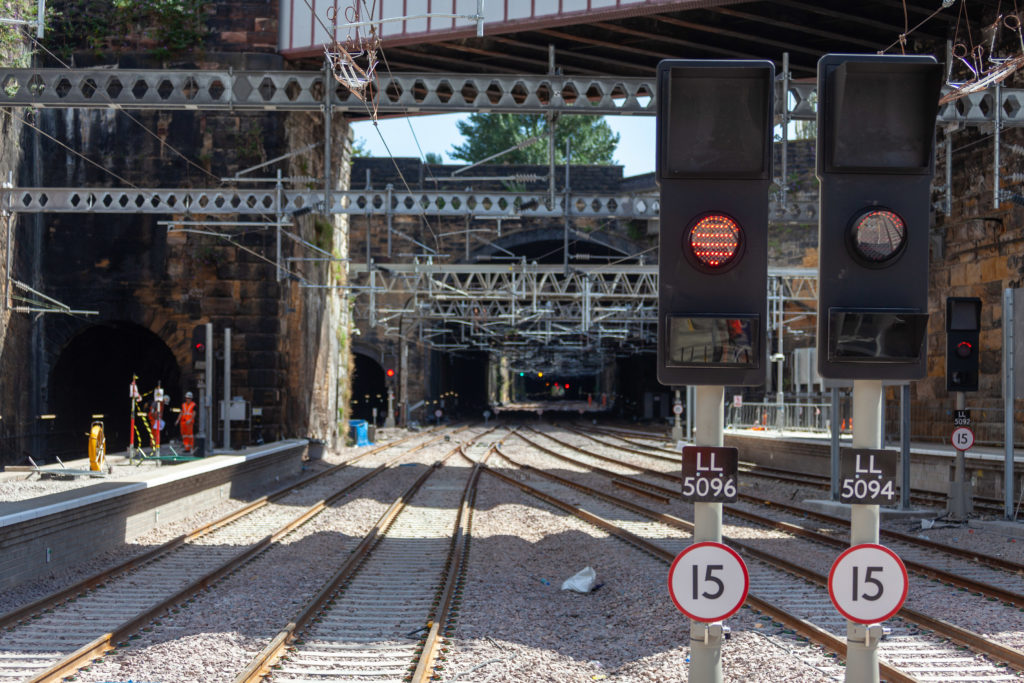

Weaver to Wavertree
The Weaver to Wavertree route runs from the West Coast Main Line, south of Warrington at Weaver Junction, to Wavertree in the Liverpool direction. The scheme goes back to BR days nearly 30 years ago, but May 2018 saw the commissioning of the first phase of the successful Weaver to Wavertree scheme, with the re-signalling of the Halton Junction signal box area.
This was the first introduction of Westrace Trackside System Trackguard (WTS), with 110V SOMs being introduced on an IP fibre-based telecoms (FTNx) and signalling network, with a fully managed IP-based network both at the interlocking (MROC) and trackside. It was also the introduction of the Axle Counter Processor (ACP) that directly interfaced to the Westlock via Westrace Processor Modules (PMs) and communicated directly to the axle counters via their evaluators with no other interface.

This provided many challenges, such as upskilling staff (fibre installation and testing, network testing) and support from Network Rail in updating documentation (Signalling Installation Handbook, Signalling Works Testing Handbook, and Signalling Maintenance Specifications) to provide the necessary information and paperwork for the lifecycle of the signalling system.
There were also other issues associated with trying to implement a new signalling system, such as general fault finding, knowledge of components, and usage of new installation/testing equipment. This also included supporting other offices around the country which were implementing WTS at later stages for lessons learnt and best practice.
Trafford Park
August 2021 saw the commissioning of the Trafford Park re-signalling scheme which replaced the life-expired Trafford interlocking with a new FEP area, connecting it onto the existing Castlefield CIP, and included a new axle counter processor, with all new line side signalling assets. Amendments to the existing Manchester Oxford Road and Manchester Central Westcad workstations were also undertaken, with updates to the ARS systems.
The commissioning was delivered over a 72-hour period. It was achieved in tight timescales due to Westlock, Westrace, and Frauscher data being tested off site, as well as the full network being replicated to allow network testing, with a significant number of signalling assets fully through-tested and all axle counters fully corresponded prior to the commissioning.
In summary, since the building of the MROC in 2014 it has expanded, with seven new workstations and 11 Westlock CBI interlockings commissioned, as well as four SSIs and two RRIs re-controlled into the MROC. As a result, this has improved the railways in the North West providing better reliability, more trains for passengers, easier maintenance, lower costs, better cyber security, and the foundation for ETCS. From the ambitious original scheme list, only Warrington PSB and Manchester Piccadilly PSB re-control, and the resignalling of Manchester Oxford Road have not been delivered due to budget reductions.
Future schemes
Over the next five years MROC is planned to expand even further, with a possible five new workstations and seven Westlock CBI interlockings, as well as expanding existing workstations and Westlocks to create more MROC control. These include:
Re-signalling and re-modelling from Manchester Victoria station to Bagley Fold. This will affect the existing Salford and Clayton Westlock and a new Miles Platting Westlock, with the signalling being controlled across the Manchester Central and North Workstations. This will also include the first Manually Controlled Barrier with Obstacle Detection (MCBOD) level crossing in the MROC.

Macclesfield – This will see a new Westcad workstation and a new Westlock.
Crewe Hub – Phase 1 with two new workstations and two new Westlocks. Further phases could include a further two new workstations and three new Westlocks, along with Gresty Lane being transferred to MROC.
The recently announced £84 million funding from DfT, part of the Manchester Recovery Task Force’s (MRTF) plan to improve reliability across the region, to resignal the Castlefield Corridor, and the remodelling of Manchester Oxford Road station.
Similar ETCS ready schemes have taken place all over the network at other ROCs and much has been undertaken to create Digital Railway signalling. There is still much to do though with many mechanical signal boxes still in service. For example, Monks Sidings near Warrington dates from 1875 and is likely to be in use until the end of the decade.
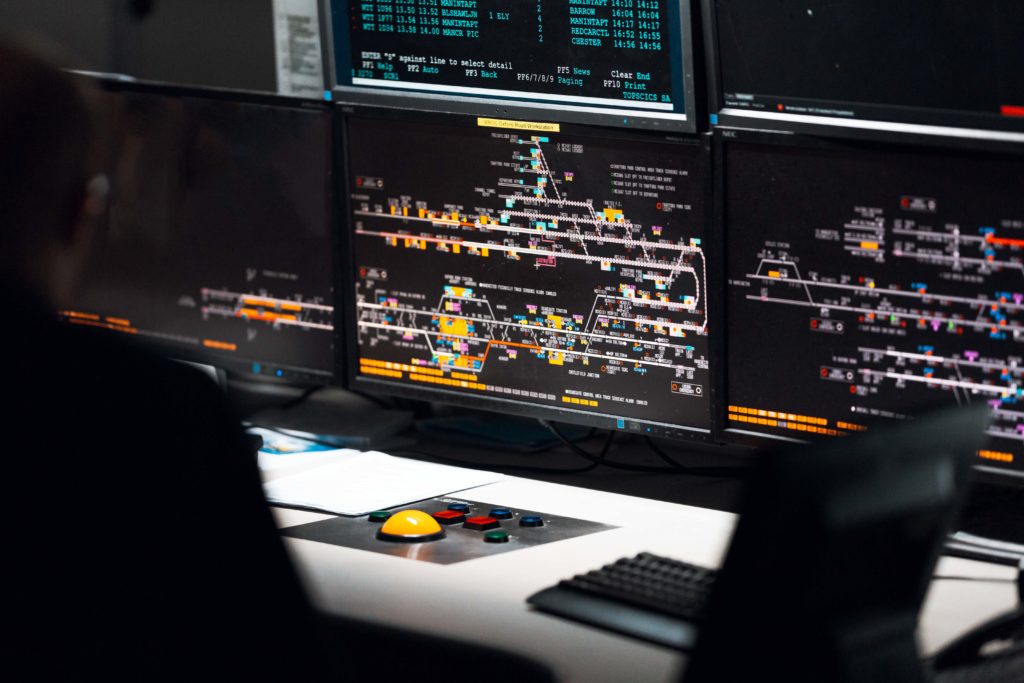
Photo credits: ©MatthewNicholPhotography / Network Rail / Paul Darlington

